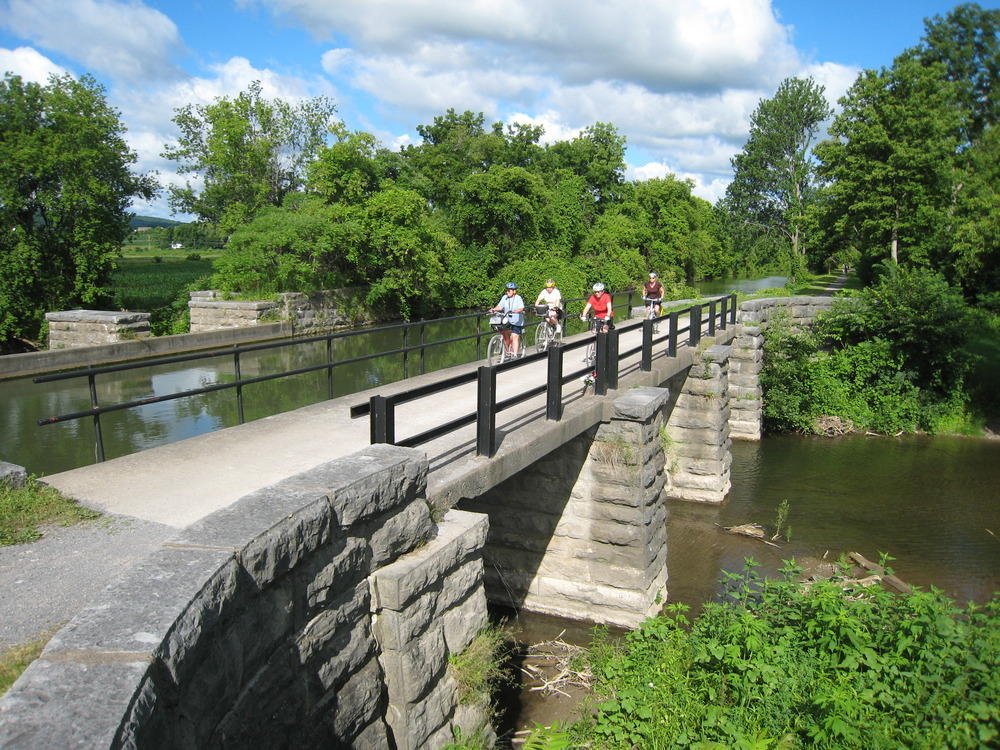As we crossed New York from Albany to Buffalo, Tom and I had several opportunities to stop along the Erie Canalway National Heritage Corridor. I was able to get the stamp for Erie Canalway at the Women’s Rights National Historical Park. National Heritage Areas and Corridors are places where historic, cultural, and natural resources combine to form a cohesive, nationally important theme. Unlike national parks, National Heritage Areas are large lived-in landscapes. Consequently, National Heritage Area entities collaborate with communities to determine how to make heritage areas or corridors relevant to local interests and needs. There are 62 of these designated areas throughout the United States.
The Erie Canal runs east and west between the Hudson River and Lake Erie. Completed in 1825, the canal was the first navigable waterway connecting the Atlantic Ocean to the Great Lakes. The canal reduced the costs of transporting people and goods across the Appalachians. The Erie Canal accelerated the settlement of the Great Lakes region, the westward expansion of the United States, and the economic ascendancy of New York state. It has been called “The Nation’s First Superhighway.”

The original canal was 363 miles long, 40 feet wide, and 4 feet deep. The peak year for transporting goods on the Erie Canal was 1855, when 33,000 boats used the canalway. It remained competitive with the railroad until 1902. Today the Erie Canalway is used primarily for recreational watercraft. A popular biking trail follows the canal along what used to be the towpath.
The Erie Canalway National Heritage Corridor preserves and protects the expanded canal system as well as the history of the canal. Boats can travel 524 miles that include canals, rivers, and lakes. The waterway is open from mid-May to mid-October and is free. Lock tenders are on hand to assist boaters through the locks.
Cyclists can ride 360 miles along the Canalway Trail from Albany to Buffalo. The towns along the waterway are taking full advantage of the trails to increase tourism and keep their towns alive. The Canalway is part of the 750 mile Empire State Trail. There are primitive campsites at locks, bed and breakfasts and hotels in the towns along the way, and both state and private campgrounds. 2025 will be the 200th anniversary of the Erie Canal and there will be lots of special events. You can read more about the celebration here.
It is always interesting to see the way that the National Park Service teams with communities to preserve the heritage of an area. It has extra weight if it is a nationally protected site. And, of course, more people come to visit. They want to get the stamp.


